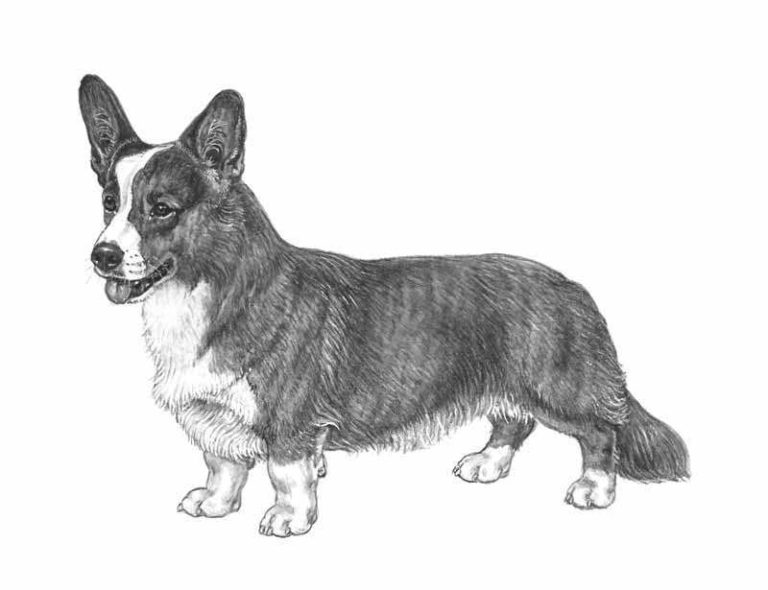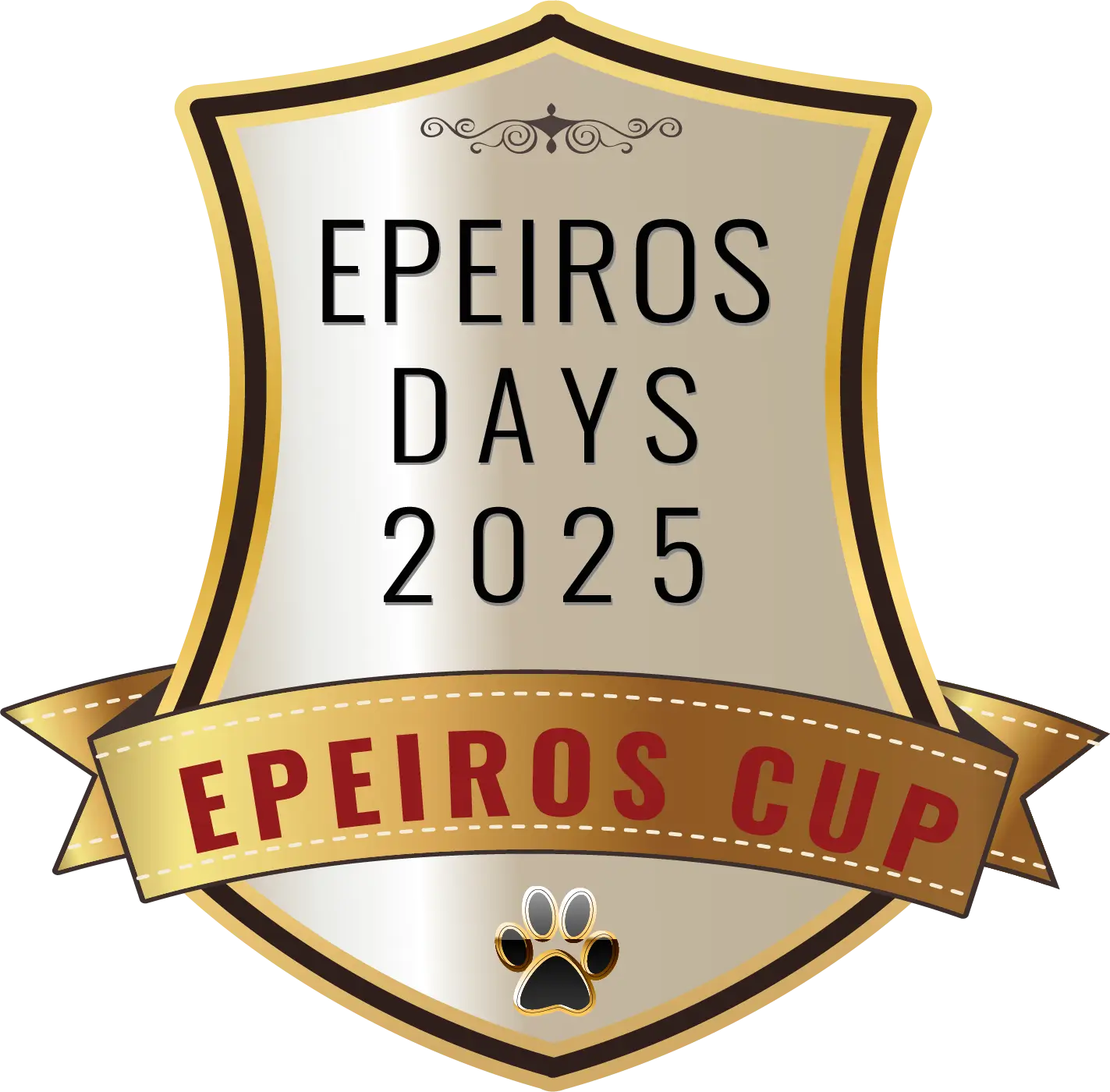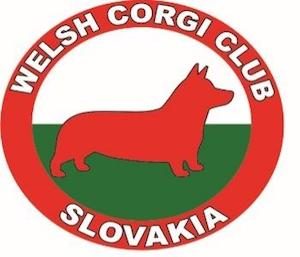Standard
GENERAL APPEARANCE: Sturdy, tough, mobile, capable of endurance. Long in proportion to height, terminating in fox-like brush, set in line with body.
IMPORTANT PROPORTION: Length of foreface in proportion to head 3 to 5.
BEHAVIOUR / TEMPERAMENT: Alert, active and intelligent. Steady, not shy nor aggressive.
HEAD: Foxy in shape and appearance.
CRANIAL REGION:
Skull: Wide and flat between ears; tapering towards eyes above which it is slightly domed.
Stop: Moderate.
FACIAL REGION:
Nose: Black, projects slightly and in no sense blunt. Muzzle: Tapering moderately towards nose.
Jaws / Teeth: Teeth strong with scissor bite, i.e. upper teeth closely overlapping the lower teeth and set square to the jaws. Underjaw clean cut. Strong but without prominence.
Eyes: Medium size, clear, giving kindly, alert but watchful expression. Rather widely set with corners clearly defined. Preferably dark, or to blend with coat, rims dark. One or both eyes pale blue, blue or blue flecked permissible only in blue merles.
Ears: Erect, proportionately rather large to size of dog. Tips slightly rounded, moderately wide at base and set about 8 cm (3.5 ins.) apart. Carried so that tips are slightly wide of straight line drawn from tip of nose through centre of eyes, and set well back so that they can be laid flat along neck.
NECK: Muscular, well developed, in proportion to dog’s build, fitting into well sloping shoulders.
BODY: Fairly long and strong. Topline: Level.
Loin: Waist clearly defined.
Chest: Moderately broad with prominent breast bone. Brisket deep. Well sprung ribs.
TAIL: Like a fox’s brush set in line with the body and moderately long (to touch or nearly touch ground). Carried low when standing but may be lifted a little above body when moving, not curled over back.
LIMBS: Strong bone. Legs short but body well clear of the ground.
FOREQUARTERS:
Shoulder: Well laid, angulated at approximately 90 degrees to upper arm, muscular.
Elbow: Close to sides.
Forearm: Slightly bowed to mould round the chest.
Forefeet: Round, tight, rather large and well padded. Turned slightly outwards.
HINDQUARTERS:
General appearance: Strong, well angulated and aligned with muscular thighs and lower thighs; strong bone carried down to feet. Legs short.
Metatarsus (Rear pasterns): Vertical when standing, viewed from side and rear.
Hind feet: Round, tight, rather large and well padded.
GAIT/ MOVEMENT: Free and active, elbows fitting close to sides, neither loose nor tied. Forelegs reaching well forward without too much lift, in unison with thrusting action of hindlegs.
COAT
Hair: Short or medium, of hard texture. Weather-proof, with good undercoat. Preferably straight.
Colour: Accepted colours are blue merle, brindle, red, sable, tricolour with bridle points and tri colour with red points.
All of the above with or without typical white markings on head, neck chest, underparts, legs and feet, white tail tip. White should nod predominate on body or head where it should never surround the eyes. Nose and eye rims must be black. Liver and dilute colours highly undesirable.
SIZE AND WEIGHT:
Ideal height at withers: 30 cm.
Weight: In proportion to size with overall balance the prime consideration.
FAULTS: Any departure from the foregoing points should be considered a fault and the seriousness with which the fault should be regarded should be in exact proportion to its degree and its effect upon the health and welfare of the dog and on its ability to perform its traditional work.
DISQUALIFYING FAULTS:
Aggressive or overly shy dogs.
Any dog clearly showing physical or behavioural abnormalities shall be disqualified.
NB:
Male animals must have two apparently normal testicles fully descended into the scrotum.
Only functionally and clinically healthy dogs, with breed typical conformation, should be used for breeding.

©M.Davidson, illustr. NKU Picture Library

